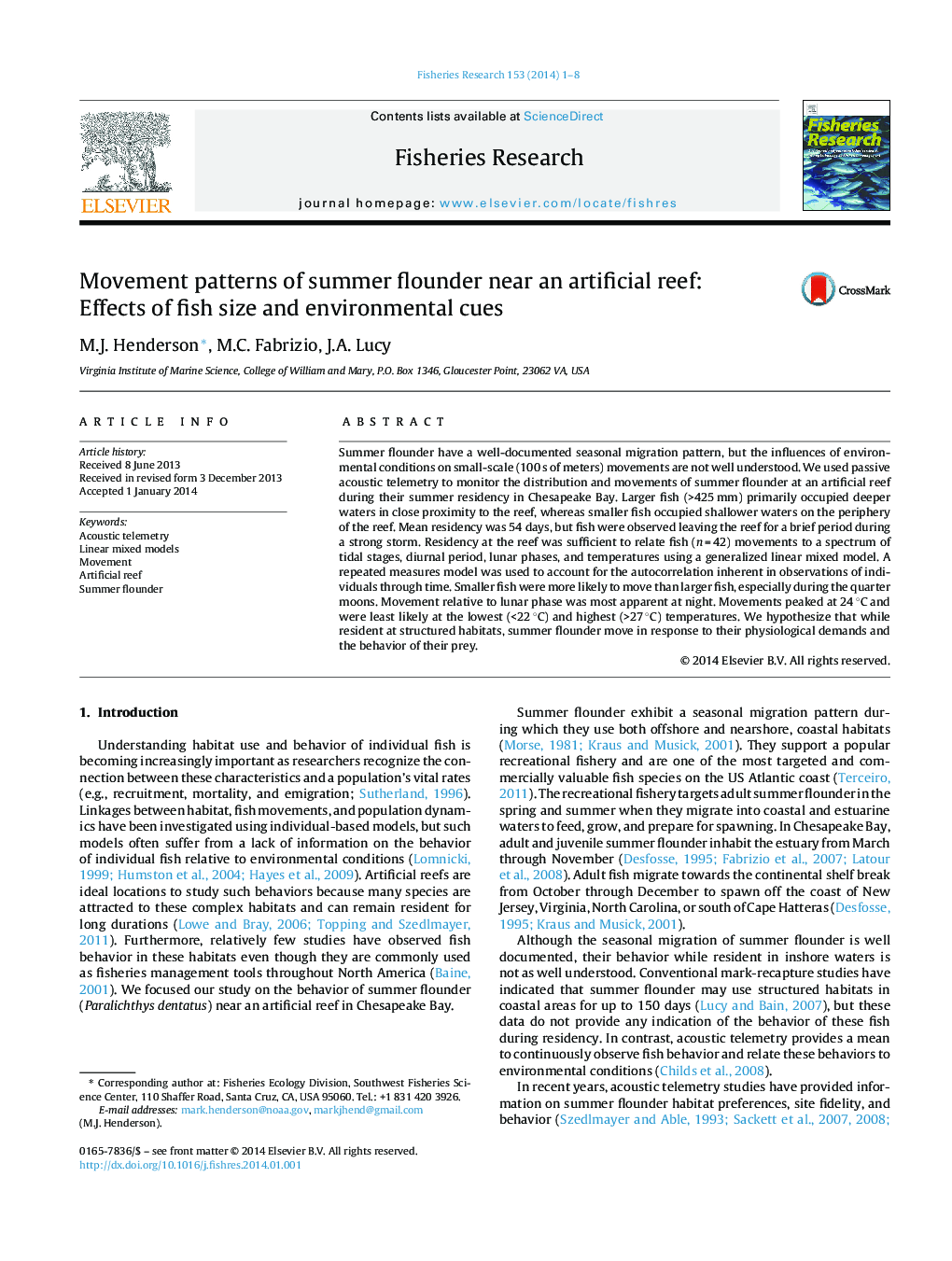| Article ID | Journal | Published Year | Pages | File Type |
|---|---|---|---|---|
| 6385864 | Fisheries Research | 2014 | 8 Pages |
Abstract
Summer flounder have a well-documented seasonal migration pattern, but the influences of environmental conditions on small-scale (100 s of meters) movements are not well understood. We used passive acoustic telemetry to monitor the distribution and movements of summer flounder at an artificial reef during their summer residency in Chesapeake Bay. Larger fish (>425 mm) primarily occupied deeper waters in close proximity to the reef, whereas smaller fish occupied shallower waters on the periphery of the reef. Mean residency was 54 days, but fish were observed leaving the reef for a brief period during a strong storm. Residency at the reef was sufficient to relate fish (n = 42) movements to a spectrum of tidal stages, diurnal period, lunar phases, and temperatures using a generalized linear mixed model. A repeated measures model was used to account for the autocorrelation inherent in observations of individuals through time. Smaller fish were more likely to move than larger fish, especially during the quarter moons. Movement relative to lunar phase was most apparent at night. Movements peaked at 24 °C and were least likely at the lowest (<22 °C) and highest (>27 °C) temperatures. We hypothesize that while resident at structured habitats, summer flounder move in response to their physiological demands and the behavior of their prey.
Related Topics
Life Sciences
Agricultural and Biological Sciences
Aquatic Science
Authors
M.J. Henderson, M.C. Fabrizio, J.A. Lucy,
